Would you like to see a comet or asteroid tonight? There are a number of bright comets in 2024 that really beg to be sought out and observed.
Comets, asteroids and other Near-Earth Objects (NEOs) are a fascinating sight to behold, if you can manage to spot one in the night sky.
Many will remember the appearance of Comet Hale-Bopp in the 1990s, or much more recently, the beautiful sights of Comet NEOWISE and Comet C/2022 E3 ZTF that made headlines around the world and enticed us all to take a look up at the evening sky.
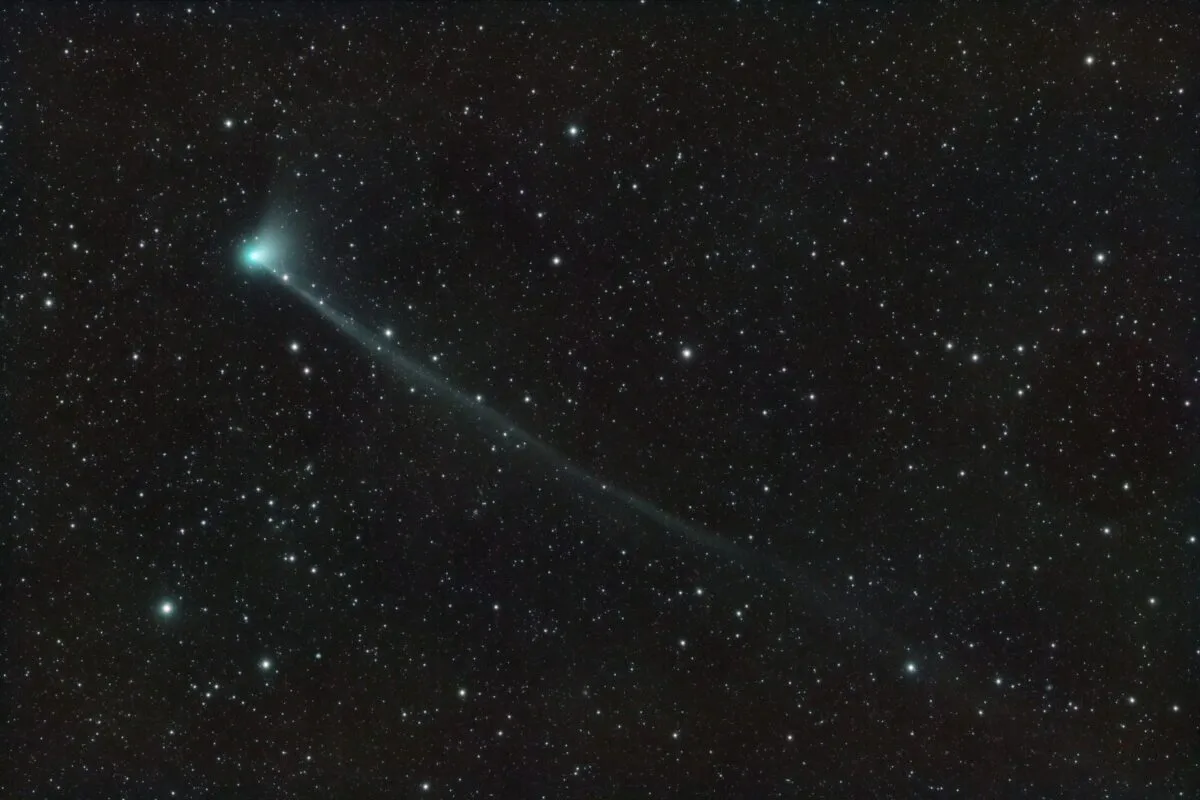
Asteroid Vesta, for example, is one member of the Asteroid Belt that can also be seen, provided you know where and when to look.
But how do you spot comets and asteroids in the night sky? Is there a comet tonight that's visible where you are?
Find out in our guide to which comets and asteroids are visible tonight and over the coming weeks.
For help understanding what our brightness indicators mean, read our guide to stellar magnitude.
If you're a complete beginner, get started with our guide to astronomy for beginners.
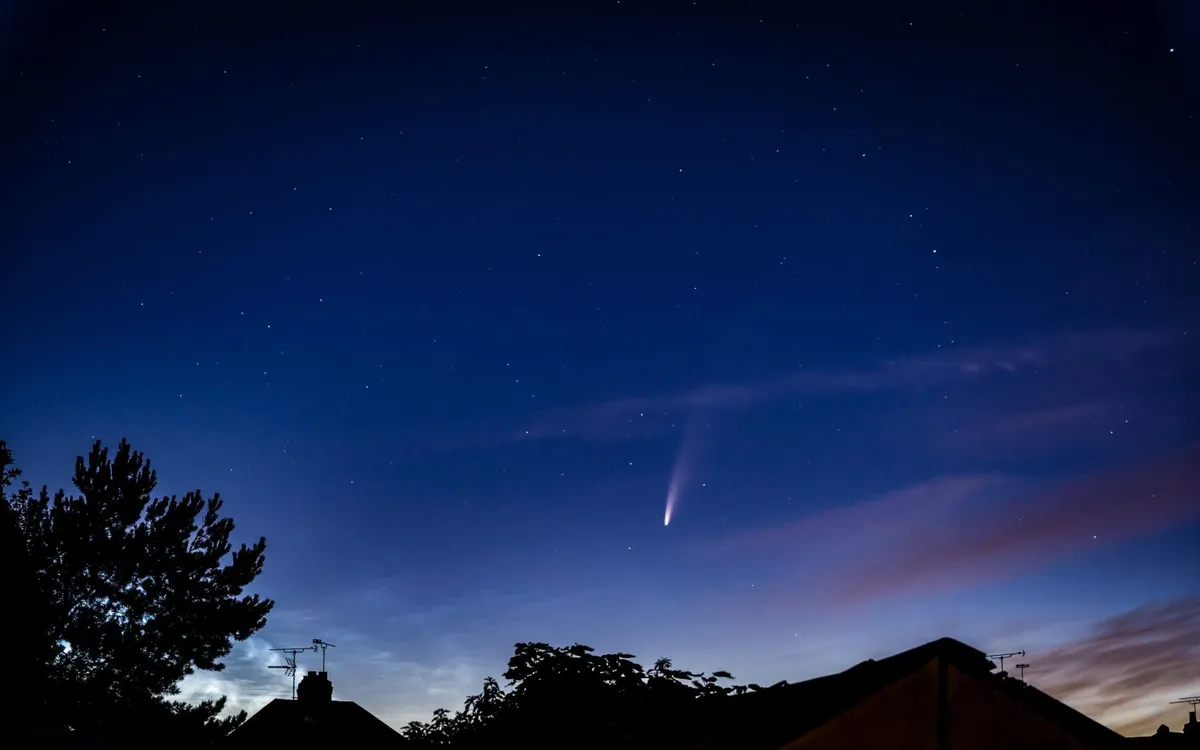
March 2024
Comet C/2021 S3 PanSTARRS

Comet C/2021 S3 PanSTARRS is visible in the morning sky throughout March 2024 and predicted to shine at eighth magnitude, meaning it should be visible through binoculars.
C/2021 S3 PanSTARRS head north-northeast from Serpens Cauda through Aquila, Sagitta and finally into Vulpecula.
Once in Vulpecula, the comet will pass into the deep-sky object known as Collinder 399, Brocchi’s Cluster or the Coathanger Cluster.
Comet 12P/Pons–Brooks
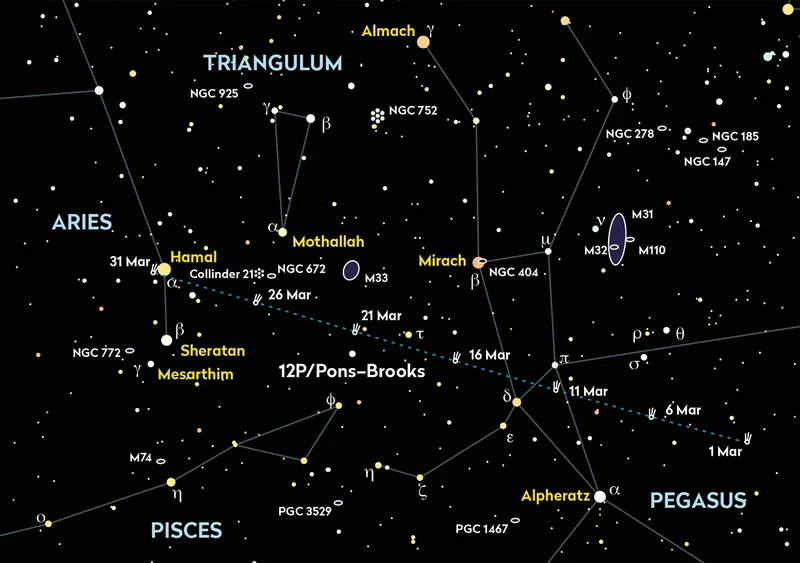
12 P/Pons-Brooks could brighten from mag. 7.1 to 5.2 throughout March, which would take it close to naked-eye territory.
While C/2021 S3 PanSTARRS is best in the early morning sky, 12P is best viewed in the evening sky, which will cause problems given the brightening evenings as we head into April.
Comet 12P/Pons–Brooks begins March north of the Great Square of Pegasus, technically within the constellation Andromeda.
As the sky gets dark from the centre of the UK, it’ll be about 24° above the west-northwestern horizon.
The comet then heads southeast, brightening as it goes.
Asteroid 3 Juno
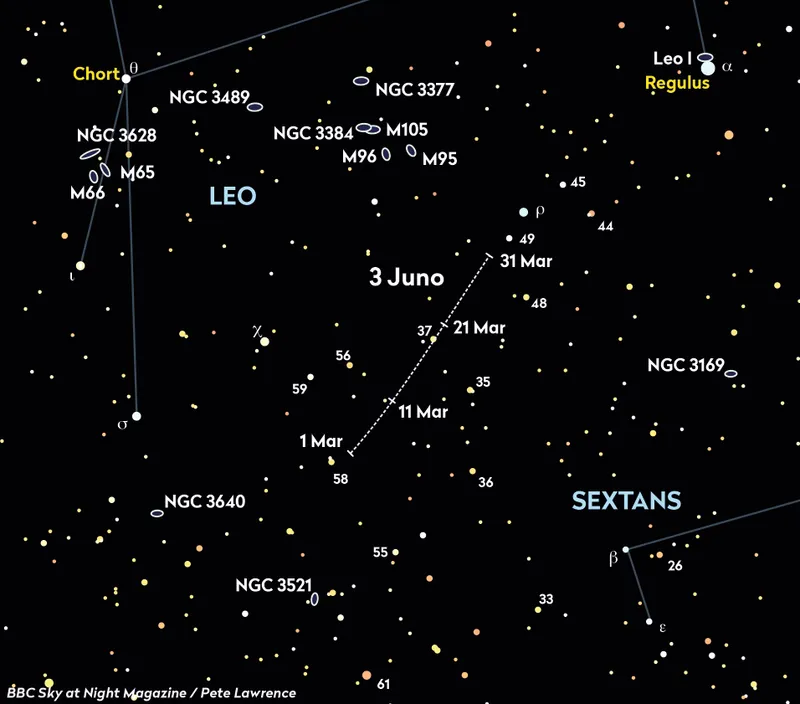
Asteroid 3 Juno reached opposition on 3 March, when it was located in southern Leo near the border with Sextans
It began March close to mag. 4.8 58 Leonis and shining at mag. 8.8 and could be visible through binoculars, but is best through a small telescope
Asteroid 3 Juno is heading northwest throughout March, clipping the border between Leo and Sextans.
February 2024
Comet 62P/Tsuchinshan
Comet 62P/Tsuchinshan, also known as Tsuchinshan 1, will be within the northern part of the Bowl of Virgo during February, situated fairly close to the mag. 4.9 star Rho (ρ) Virginis.
The comet was discovered at the Purple Mountain Observatory in Nanking, China in January 1965, having been identified on a photograph taken on New Year’s Day 1965.
Subsequent observations made via the Mount Palomar Observatory, California in February 1965 allowed an initial orbital period of 7.22 years to be computed, later refined to 6.62 years as more positional data was obtained.
The comet made a close pass of Jupiter in December 1960 which, it was computed, had adjusted the orbital period from 7.15 years to 6.62 years.
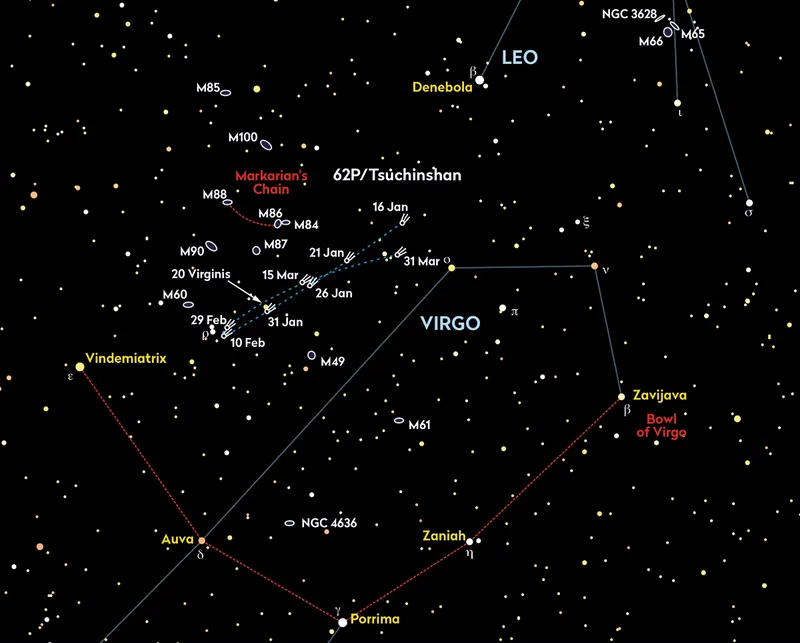
Although typically rather faint, prospects for observing 62P/Tsuchinshan in 2024 are promising.
After last reaching perihelion on Christmas Day 2023, the comet remained around seventh magnitude throughout January.
On 1 February, it is predicted to have an integrated magnitude of 7.8, but is also expected to fade fairly steadily to mag. 9.3 by the end of the month.
The comet’s orbit is inclined to the plane of the Solar System by 10.5°. Perihelion varies over time, but is currently 1.26 AU. Aphelion takes the comet out to a distance of 5.47 AU from the Sun.
The comet’s orbit will have it make a close pass of Mars in 25 years when, on 1 April 2049, it will pass 0.016 AU, which is 2.4 million kilometres, from the Red Planet.
Comet 144P/Kushida

Comet 144P/Kushida is among a collection of comets well placed for Northern Hemisphere viewing in early 2024.
The best time to see 144P/Kushida will be 1–18 and 28 January into early February.
The comet is ninth-magnitude in February, which means it's a good target for a small telescope or larger-format binoculars, and will pass by the Hyades star cluster.
Find out more in our guide to Comet 144P/Kushida
January 2024
Comet 144P/Kushida
Comet 144P/Kushida is well placed for Northern Hemisphere viewing in January 2024.
The best time to catch the comet through binoculars or a telescope will be 1–18 and 28 January into early February
The comet passes from southern Aries at the start January 2024 towards the Hyades in Taurus by the end.
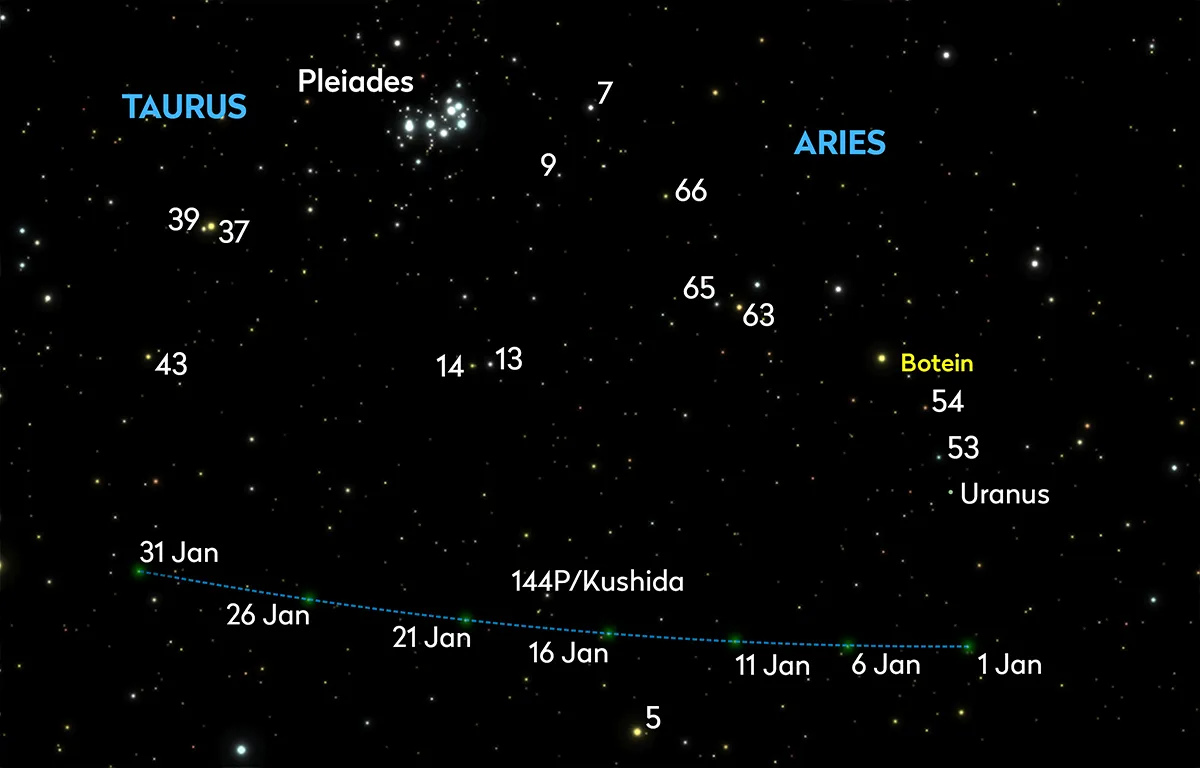
Have you managed to photograph Comet 144P/Kushida? Let us know by emailing contactus@skyatnightmagazine.com.
